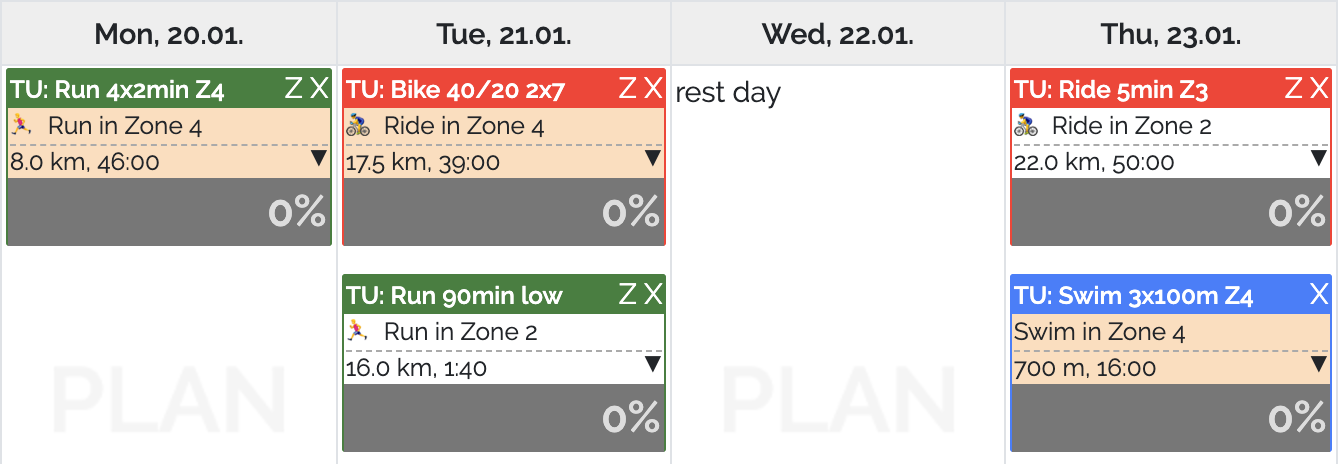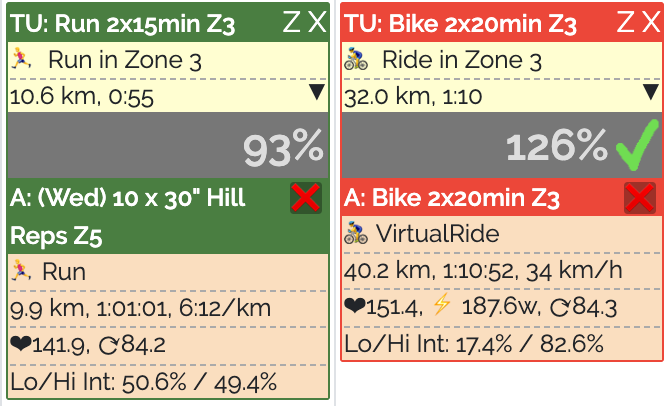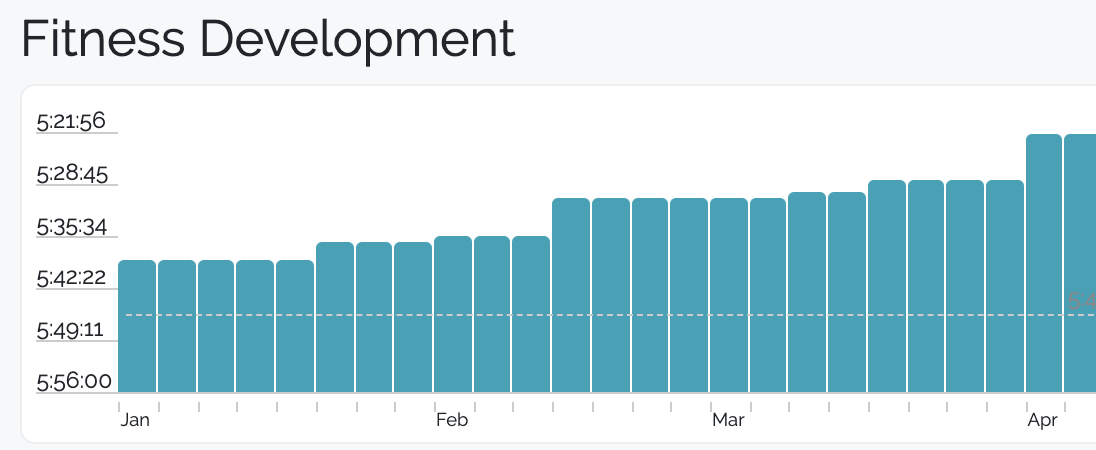How does the Virtual Coach work?
Let's put simple things first...
Colors
Your coach is a Triathlon coach. Colors and symbols mark the different disciplines everywhere here, but especially in training units. Swimming is blue like the ocean (of course), Cycling is green, and Running is red. (We recently switch red and green between cycling and running so that fits more naturally to the surrounding and effort of the disciplines, so please bear with us for the following slightly outdated pictures.)

Training Units and Activities
There is a distinction between training units (TU), which are provided by your coach, and activities (A), which are delivered by you. Training units are created automatically - there is no need to write training plans yourself anymore. You can move a unit to a different day in a week, change specific workouts within the unit or cancel it (e.g. if you feel sick). The terms training sessions and training units are used interchangeably.
Activities can be tracked and entered by hand, but we stronlgy advice you to have them simply synchronized from Strava (other platforms might be supperted in future as well). You can (auto-)connect activities to the training units they are intended to fulfill. This way, you can compare planned and delivered performance in training sessions.

Training Zones
Every training has an intension, and the intensity zone of a unit is one of the key factors that determine what impact a training unit will have on your body. There will be very easy sessions in Zone 1 (or just called Z1), moderate ones in Zone 2 up to really short bursts of high power in Zone 5. Don't worry - most of your time (at least 80%), you will spend in Zone 1 or Zone 2. You will benefit most if you monitor your heart rate using a smart watch or sports tracker and stay in that desired zone. Alternatively you can learn how these zones should feel after a while, and listen to your body carefully during sessions.
We use the zone descriptions from the excellent book "80/20 Triathlon" here, which you can calculate using the folloing link:
Plan week by week
Everything is planned in weekly cycles. More precisely, your coach will make you a proposal for the next training week every Friday evening. The proposal includes the type, intensity and duration of training sessions for all configured disciplines. You can change the proposal (in a limited fashion) to your needs or just leave everything as-is. The proposal will be applied to your calendar on Sunday evening.
There are different types of weeks: Training weeks (called "Stress" here), recovery weeks, race weeks and easy weeks before races (called "Tapering"). The coach knows when to use what intensity, and so you will have different week types along the way. Week types are also marked by different colors:
Stress
Recovery
Tapering
Race Week
Sickness
Long-Term Strategy: Progression
Either you are training for a specific race, or you are using a more general, season-based approach - there will be a starting point for every preparation as well as some point of time you want to be the most strong and fresh you possibly can. Your virtual coach will accompany this journey from the start to the peak of performance just before the final race day - and beyond. We call that "Progression" here.
Your training will progress from slower, shorter and less intense sessions up to really demanding high-intensity or long-lasting units that will boost your physical engine to the next level. Therefore, your preparation period should ideally span over 6 to 8 month. Then, the increase happens little by little, without any risky jumps - giving your body enough time to adapt and grow.

Race Fitness
The coach will track your progress, detecting changes in your performance week by week. The coach will then calculate your potential race day performance, including a rough estimation of your finish time. Over the course of your preparation, you will see how your race fitness grows and you will come closer to your desired finish time. It is also a good possibility to check whether your goal is in fact reachable or just a bubble that will burst on race day.

Recovery Included
To reach a good fitness level and feel prepared for Triathlon races, you will have to do hard work - really hard work. But you have to do it sensibly, to avoid over-training, fatigue, injury and frustration. Your virtual coach will help with that by scheduling training units that fit your level of performance, weekly time constraints, the current progression phase and your overall fitness goal.
In general, the coach uses a modern, polarized training approach. That means you do either short and intense sessions or have longer easy ones, avoiding the in-the-middle-of-nowhere things. Your sessions will focus on only one thing at a time, be it endurance, aerobic capacity or power development. Recovery and athletics sessions will be scheduled within, and we want you to take them as serious as all other training units throughout the entire season. Before and after races, there will be periods of less training, to allow your body to build race freshness or recover from races.
Also even in training phases, there will be a recovery week every 3rd to 4th week, giving your body time to re-fill with energy and motivation. The coach will track your "freshness" to protect you from collecting too much training load. If your load "hits the fan", it is time to have a recovery week.

Specialties
There are some specialties to Triathlon training - and professional endurance training in general - that are incorporated here as well.
Brick Sessions: Probably the most interesting one is this so called "Brick-Training". It is a combination of two disciplines in one unit. Your body will get used to transition and different muscle recruitments within the race. In Triathlon-Planner, you will see them from time to time in your training plans. The later the season (and nearer the races), the more often.
Diagnostics: Every 6 to 8 weeks, performance diagnostics are planned. These appear as usual training units, containing hints on how to complete the test and where to record the test results. These units are vital points within your progression, giving great insights into your physical development and potential race fitness. All diagnostics are rather short and will be scheduled in recovery weeks. They should be done in fresh shape and completely fueled.